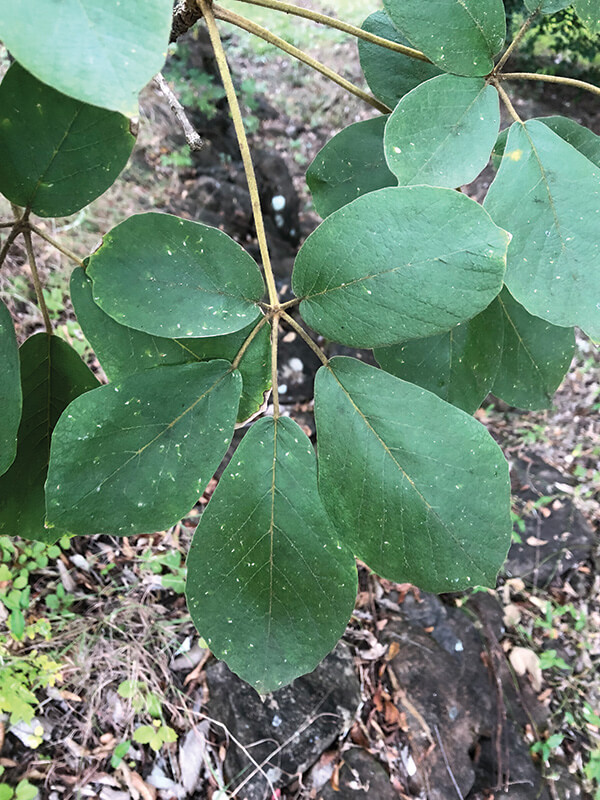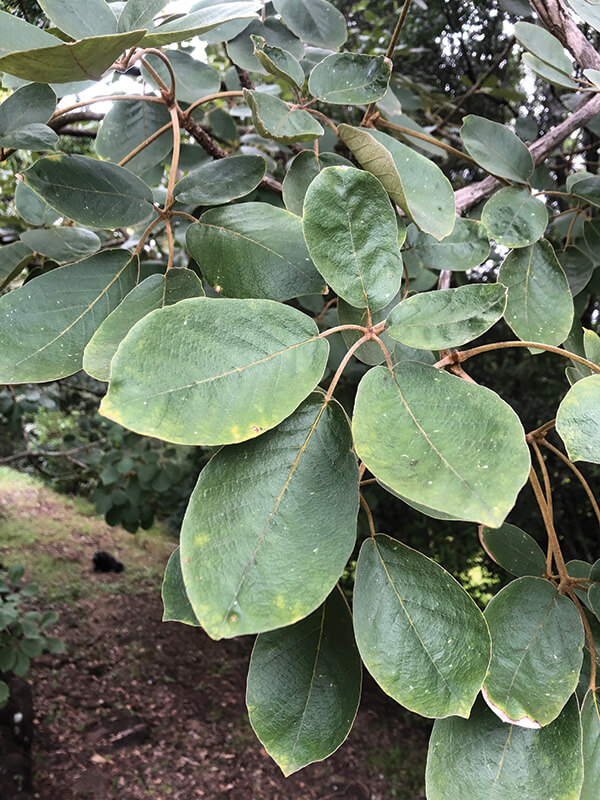 For eleven months of the year, Golden Trumpet Tree (Handroanthus chrysotrichus formerly Tabebuia chrysotricha) has a severe case of imposter syndrome. There is nothing golden to it that you would want to trumpet about at all. There is nothing that makes you want to look at it and take notice, especially in winter when it’s dropped all its leaves. Then for about one month of the year in spring, before it has regrown its leaves, it decides to live up to its name a little too well by bursting into a mass of bright yellow trumpet-shaped flowers which almost blind the passerby.
For eleven months of the year, Golden Trumpet Tree (Handroanthus chrysotrichus formerly Tabebuia chrysotricha) has a severe case of imposter syndrome. There is nothing golden to it that you would want to trumpet about at all. There is nothing that makes you want to look at it and take notice, especially in winter when it’s dropped all its leaves. Then for about one month of the year in spring, before it has regrown its leaves, it decides to live up to its name a little too well by bursting into a mass of bright yellow trumpet-shaped flowers which almost blind the passerby.
Now before I make you want to go out and buy one of these beauties, I must point out Golden Trumpet Tree is an emerging environmental weed. It has been planted widely as a street tree and its long seed pods (up to 40cm long) have many wind-dispersed papery seeds that float off from the edge of the road to germinate profusely nearby. If this sounds familiar then you won’t be surprised that Golden Trumpet Tree is in the same plant family (Bignoniaceae) as Cat’s Claw Creeper. Like Cat’s Claw Creeper, seedlings of Golden Trumpet Tree form an underground tuber which probably assist them getting through tough times.
 Native to Central and South America it has been recorded as naturalised in northern NSW and SEQ. Seedlings can have 1, 3 or 5 leaflets and leaves usually have teeth. Adult leaves can have serrated margins or not. The trunks have rough furrowed greyish bark and the leaves each have five leaflets coming from a central point (i.e. pinnately-compound). After the yellow flowers have finished, long furry brown seed pods hang from the branches. Seedlings, new growth on adult trees and seed pods all have brownish hairs.
Native to Central and South America it has been recorded as naturalised in northern NSW and SEQ. Seedlings can have 1, 3 or 5 leaflets and leaves usually have teeth. Adult leaves can have serrated margins or not. The trunks have rough furrowed greyish bark and the leaves each have five leaflets coming from a central point (i.e. pinnately-compound). After the yellow flowers have finished, long furry brown seed pods hang from the branches. Seedlings, new growth on adult trees and seed pods all have brownish hairs.
I spent a couple of years with a Land for Wildlife landowner at Eudlo on the Sunshine Coast wondering where all their Golden Trumpet Tree seedlings were coming from. Every visit we’d look around to see if there was an adult tree lurking in the forest nearby. One visit in spring, I looked up the hill to see the parent tree across the road as a yellow blur on the horizon. In the perfect spot for a south-easterly wind to blow the seeds down the hill into the forest. Mystery solved!
There is often a lag between when an emerging environmental weed is recognised as a legitimate or legislated environmental weed and even longer for them to be removed from street tree lists and nursery shelves. Unfortunately, Golden Trumpet Tree is being seen on more and more properties in SEQ. You can control Golden Trumpet Tree in the same ways as other seedlings and trees through hand weeding when small, or mechanical and chemical methods. Contact your Land for Wildlife Officer for more information.
Article and photos by Stephanie Reif
Land for Wildlife Officer
Sunshine Coast Council

Hi,
I’m interested to know if a very similar tree Handroanthus Chrysanhus (tabebuia chrysantha) is also a weed candidate as is the handranthus chysotrichus. I have 2 plants grown in a pot from seeds I collected from a street tree but I don’t know which one it is. That street tree is now in full bloom.
Regards,
DAvid
My 2 acre block is infested with Golden Trumpet trees and seedlings. What can I use to kill them?
Hi Margaret. Weed control techniques are outlined on this website.
https://weeds.brisbane.qld.gov.au/control-methods
If you want specific advice on herbicide and herbicide rates to control Golden Trumpet, please contact your local Land for Wildlife Officer in your local council. They should be able to provide you with advice over the phone.
Hi! Thank our for the article . I would like to know what one needs to have accomplished the status of ,’weed’. From what I can acertain, so called weeds are just plants that like to spread. And many are very beneficial to the environment. Just a thought as I am really curious as to why weeds are, well, weeds .
Thank you!